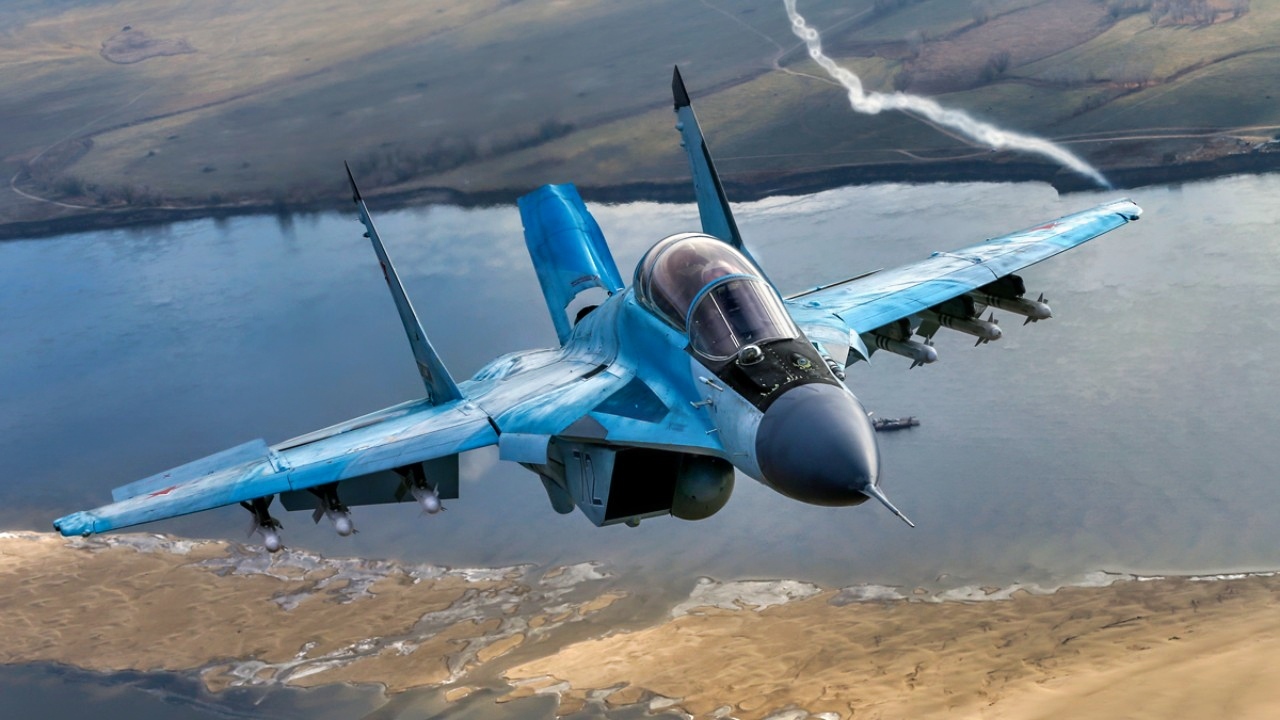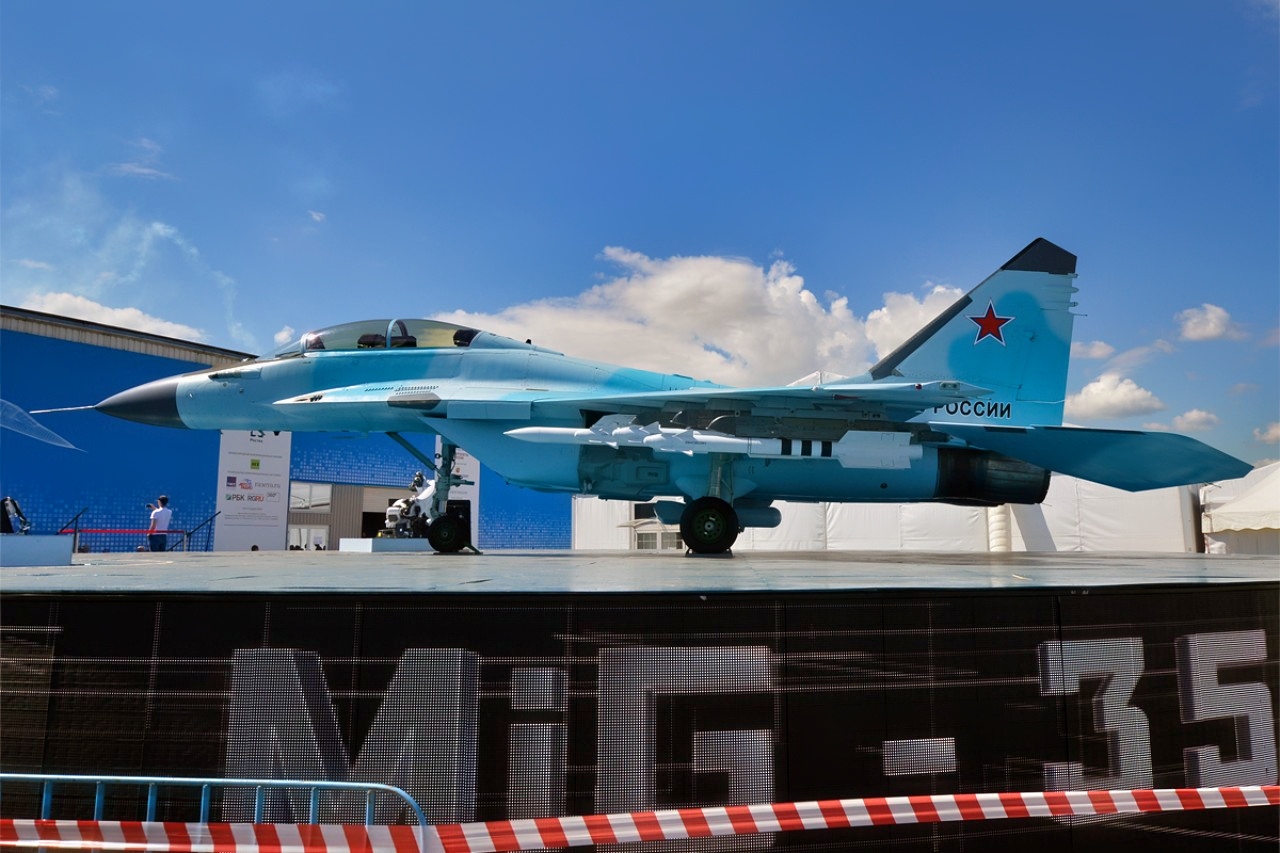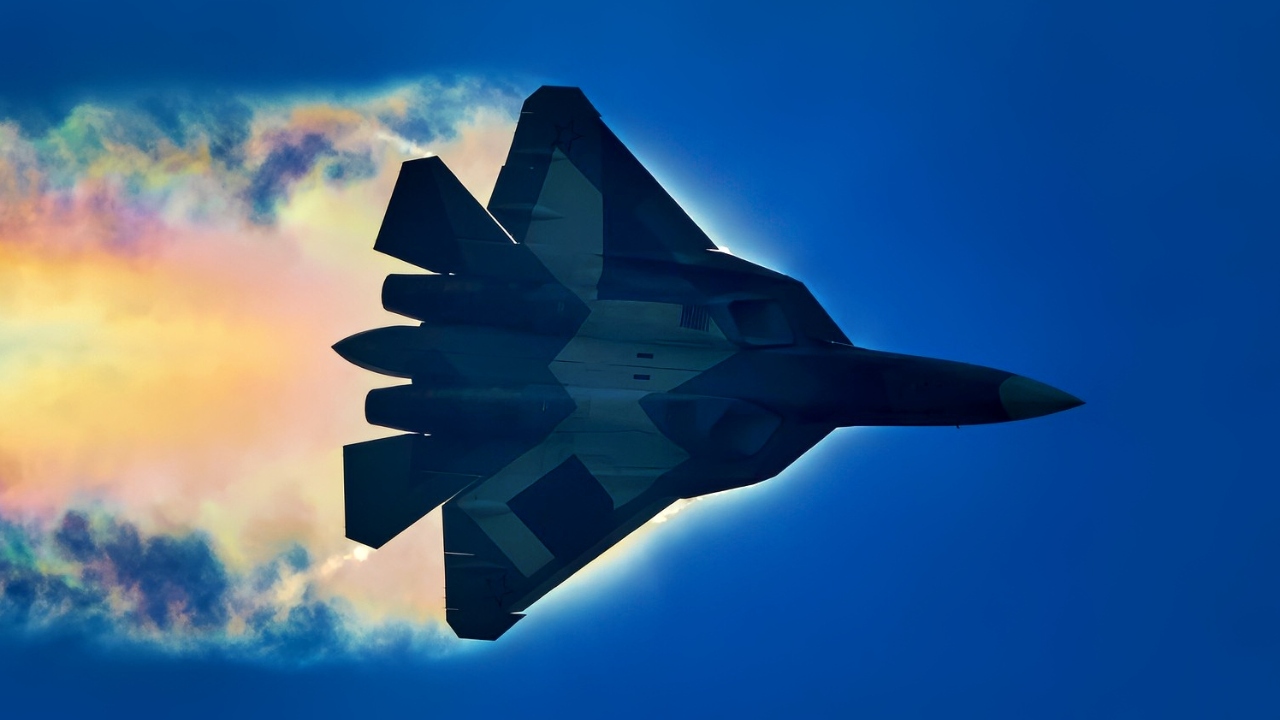Key Points and Summary: Russia’s MiG-35, introduced as a modernized “4++ generation” successor to the MiG-29, has largely failed to deliver on its promise.
-Intended to boost Russia’s light fighter capabilities and secure export orders, the program has been plagued by delays, budget cuts, and undelivered technology, including its advertised advanced radar.

MiG-35 Russian Air Force Fighter. Image Credit: Creative Commons.
-With minimal domestic procurement (fewer than ten aircraft in service) and zero major export successes, the MiG-35 has been overshadowed by Sukhoi jets within Russia’s defense industry.
-Sanctions and the war in Ukraine have further crippled the program, rendering it largely irrelevant.
-The MiG-35 example is one that the U.S. Air Force or any nation should never follow.
MiG-35: Russia’s Hope for a Lightweight Fighter
In the summer of 2008, the Russian design bureau Mikoyan unveiled a “new” fighter jet: the MiG-35, known in NATO circles as the Fulcrum-F.
Built as a twin-engine, single-seat multirole combat aircraft (with a two-seat trainer variant), the platform was intended to modernize the aging MiG-29 fleet.
The MiG-35 was promoted as a 4++-generation fighter and was intended to be sold to the domestic market and foreign buyers.
For Moscow, the jet served two essential purposes.

MiG-35 Fighter from Russia. Image Credit: Creative Commons.
First, it was a way of refreshing its light fighter category, and secondly, it was an opportunity to secure export contracts in an increasingly competitive global market.
The strategy did not, however, pan out as planned.
Origins and Development
In the late 1980s and early 1990s, the MiG-29 family became the Soviet Union’s lighter complement to the Su-27 Flanker, designed for air-superiority.
Mikoyan’s 2000s follow-on, the MiG-35, sought to build on the frame of the MiG-29 while offering new avionics, a greater payload, extended range, and multirole flexibility.
In 2011, the Indian Air Force rejected the MiG-35 in its MMRCA competition, and Russia’s procurement plans also suffered delays amid budget shortfalls.
By early 2017, the design bureau announced an order target of 24 jets by 2028 – but as of 2025, only a handful of the aircraft are believed to be in operation.
Sources suggest that somewhere between six and ten jets are in operation.
The program, which was once heralded as the next big leap for Mikoyan, didn’t achieve its stated goals.
Design and Capabilities
The MiG-35 retains the general twin-engine, mid-wing layout of the MiG-29 series but features a series of structural improvements.
Among them is an increased fuel capacity and an advanced radar suite option.
According to open-source information, the aircraft is powered by two RD-33MK turbofan engines, giving it higher thrust and a reduced smoke signature.
Its avionics included the Zhuk-A/AM AESA radar and OLS-35 electro-optical targeting system, helmet-mounted sights, and nine external hardpoints.

MiG-35. Image Credit: Creative Commons.
In reality, however, the serial production aircraft reportedly used a less advanced PESA radar than the advertised AESA, and the promised thrust-vectoring nozzles were omitted in the production standard model.
The advertised combat radius of around 1,000 km and multirole flexibility originally placed the MiG-35 as a cost-effective option.
However, the reality was quite different; the aircraft fell short of actual fifth-generation fighters’ stealth and sensor fusion capabilities.
So, in simple terms, the MiG-35 is a modernized light fighter built for versatility and affordability, failing to meet its own benchmarks.
Procurement, Exports, and Operational Reality
On paper, the Russian defense ministry signed a framework agreement in 2017 for 24 MiG-35s, with a planned first batch of six aircraft expected by 2018 and further deliveries afterward.
However, the delivery numbers don’t match up: some sources estimate that fewer than ten aircraft are in service as of 2025.
Export successes have not been great, either. While Mikoyan aggressively marketed the MiG-35 to India, Egypt, Malaysia, and other clients, none of those deals matured into large orders – and for more than one reason.
A combination of cost concerns and technical compromises simply made the aircraft less attractive than competing platforms.
That being said, there has been some recent movement with the project. This year, Russia announced a push to begin large-scale production of a “4+++ generation” version of the MiG-35, reportedly driven by combat losses in Ukraine and a need to fill fleet gaps.
That development, however, doesn’t represent a step forward as much as it reflects the dire situation of Russia’s aerospace industry, economy, and military.
With no end in sight in Ukraine, Russia is forced to look backward rather than forward, building newer versions of old platforms while failing to field next-generation aircraft that are already years behind schedule.
Sanctions and the Future
The MiG-35’s troubles are not unique and reflect broader structural issues in Russia’s aerospace sector.
Within the unified United Aircraft Corporation, the Mikoyan bureau has increasingly been overshadowed by Sukhoi’s more capable platforms, including the Su-30/35 and the coming Su-57.

Su-57 Felon Fighter with Trail. Image Credit: Creative Commons.
Simultaneously, sanctions placed on Russia after 2014 and the subsequent invasion of Ukraine have dramatically impacted supply chains and redirected resources to priority programs, further worsening the fortunes of the MiG-35 and its production line.
The jet is now more of a signaling asset – something Russia can use to signal parity with the West – than a frontline workhorse.
Russia is keeping the project alive to preserve the brand and export sales, even if it lacks scale, and is also using the platform to support the ongoing war in Ukraine.
Regarding Russia’s air doctrine, its new emphasis – which will span the next decade at least – will focus on long-range strike, survivable platforms, and multirole heavy fighters.
These are all areas where the MiG-35 offers less than its competitors, meaning Moscow’s industrial capacity could soon be drawn towards fewer and larger programs rather than maintaining multiple fighter lines.
About the Author:
Jack Buckby is a British author, counter-extremism researcher, and journalist based in New York. Reporting on the U.K., Europe, and the U.S., he works to analyze and understand left-wing and right-wing radicalization, and reports on Western governments’ approaches to the pressing issues of today. His books and research papers explore these themes and propose pragmatic solutions to our increasingly polarized society. His latest book is The Truth Teller: RFK Jr. and the Case for a Post-Partisan Presidency.
More Military
No Fix’: China’s J-20 Stealth Fighter Has 1 Problem With No Solution
The Army’s ‘Super’ MBT-70 Tank Summed Up in 1 Word
Shinano: Japan’s ‘Super’ Aircraft Carrier Was the Biggest Warship Ever Sunk by A Submarine
Russia’s ‘New’ Tu-160M Blackjack Bomber Has A Mach 2 Message for the U.S. Air Force










